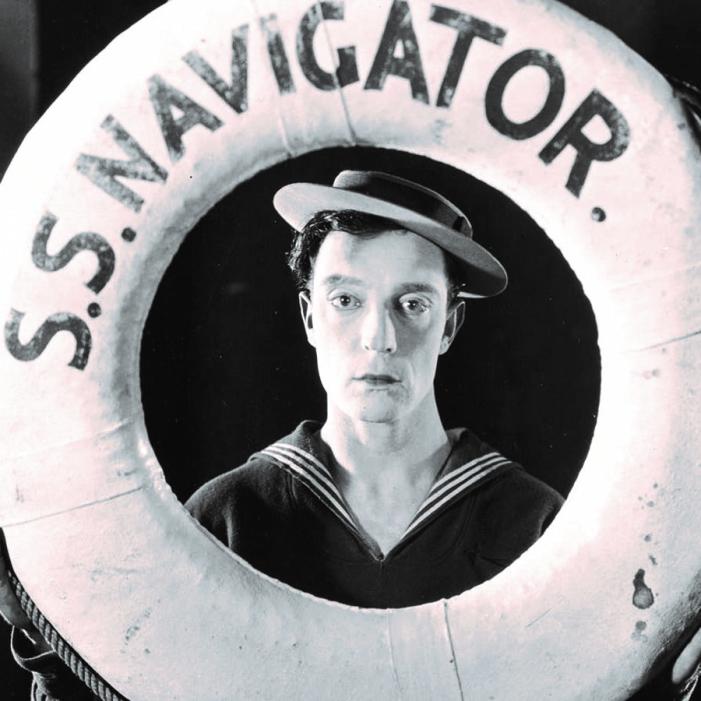The Greatest Actor Director In The History Of Film
The work of Buster Keaton – who was making his masterpieces back in the 1920s – continues to enthral today. Two new books on the silent superstar come at his life and legacy from two very different angles.
Buster Keaton was renowned for his incredible stunt work, whether he was leaping from the rooftops, or literally letting buildings fall on top of him, and they remain astonishing. But he was equally adept at the small stuff. Picture the scene: Buster is sat at a picnic table and trying to chat up a pretty woman who is sitting opposite him. We can’t hear what they’re saying, but through body language alone, we get the gist, and it looks like she’s interested. They lean towards each other, but as they do so they exert pressure on the table and it slowly begins to sink into the mud. As they get lower and lower, they only have eyes for each other. Ridiculous, of course, but the absurdity of the whole scenario somehow makes their wooing even sweeter.
Keaton was responsible for pulling together countless such scenes, not only acting in them (his deadpan style is surely one of the reasons they don’t feel dated today), but directing them too and knowing exactly where to position his camera to maximise their effect. He was born in 1895 (the year often cited as the year the film industry began) and a new book by Dana Stevens, ‘Camera Man: Buster Keaton, the Dawn of Cinema, and the Invention of the Twentieth Century’, attempts to place his unique genius in the context of the times. She examines how his life intersected with influential figures such as escape artist Harry Houdini, pioneering Black stage comedian Bert Williams, television legend Lucille Ball, and literary innovators such as F. Scott Fitzgerald and Samuel Beckett. She also looks at concurrent developments in entertainment, politics, the social status of women, and the popular understanding of addiction, in her wide-ranging examination of modernity. James Curtis’s ‘Buster Keaton: A Filmmaker’s Life’ meanwhile, is a more conventional biography, but is still pretty much essential for film fans. The author (who has previously penned a book on that other great writer/director Preston Sturges) carries his subject from 19th century vaudeville through to the first flowerings of cinema in the 20th century and onto eventual immortality. And immortality is the place where the great Buster will forever remain. RMSign Up To Little Crack


